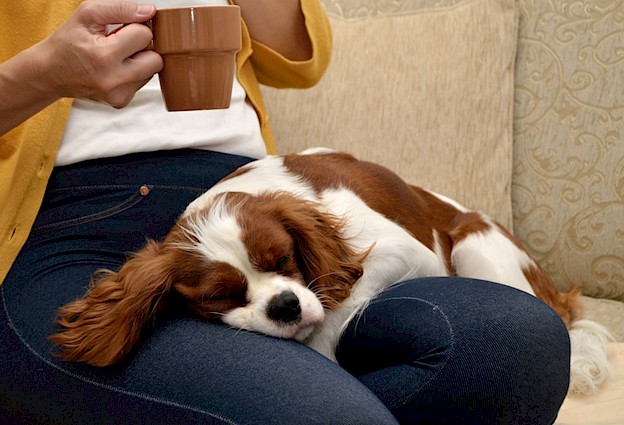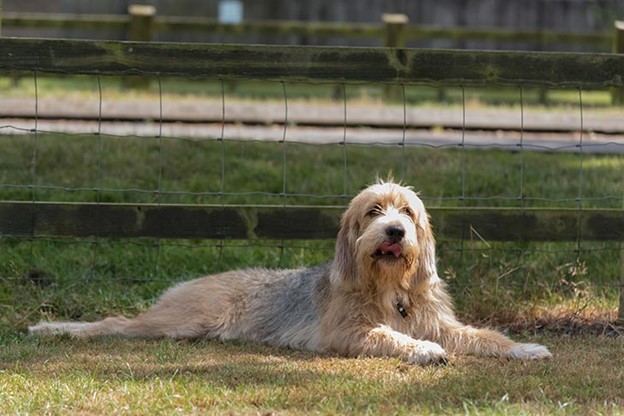By Denise Flaim for the American Kennel Club
Australian Shepherds were bred to herd. While not all Australian Shepherds today work on the farm, they will still exhibit an impulse to herd.
The adjectives that describe the dogs in our lives frequently also apply to ourselves — whether that’s reserved or energetic, loyal, or stoic. Consciously or not, we are often drawn to breeds that reflect our perception of ourselves and our values, both inside and out. And though those qualities can certainly appear in all dogs, in a purebred dog they are far more consistent and predictable. As we celebrate National Purebred Dog Day on May 1 lets look at some of the temperaments, history, and aesthetics that draw us to specific breeds.
Purpose-bred and Lovingly Owned
The purebred dogs in our lives are living, breathing, wagging symbols of the people and places that brought them into being. When you brush your hand across the wiry, weather-resistant coat of a Scottish Deerhound, you evoke the blustery moors that those hardy sighthounds traversed with their springy gait, all the better to navigate the endless expanses of heather. And when your Cavalier King Charles Spaniel perches atop your knees, you are channeling the British royalty and landed gentry who developed these excellent lap-warmers for their limpid-eyed beauty and affectionate temperament.

When your Cavalier King Charles Spaniel lays on you, you are channeling the British royalty who developed these excellent lap-warmers.
While today there are still Australian Shepherds that nip at the heels of recalcitrant cows, and Beagles that go off in merry packs in search of rabbits, most purebred dogs happily serve as household pets. The Dalmatian no longer runs behind a horse-drawn fire truck, but if he is a firehouse mascot, he is an integral part of that extended family of lifesavers. And that is the modern-day magic of purebred dogs: Due to changing social and economic shifts, today their main purpose is often to provide companionship and comfort to the humans whose lives and homes they share.
The Importance of Maintaining Purebred Dogs
Even though many purebred dogs no longer serve their original purpose, responsible breeders are committed to maintaining them as close to their original form as possible. In the best sense, they are curators of their chosen breeds. They understand that purebred dogs, with their endless sizes, shapes, and colors, tell our human story. And while Labrador Retrievers, German Shepherd Dogs, and other commonly recognized breeds are numerically robust, there are others — such as Otterhounds and Dandie Dinmonts, to name a few — whose numbers are low enough to be endangered species.
Breeders aren’t just interested in preserving a breed’s physical appearance; what goes on inside that beautiful dog is just as important. As with their physical attributes, dogs also pass on genetically ingrained behaviors from generation to generation. Many of the instincts that made dogs indispensable to our forefathers in helping provide food, transportation, and protection are etched in their DNA. The Pointer’s characteristic, shock-still stance when he scents a quail isn’t learned: it is lying in wait, reinforced through decades if not centuries of purposeful breeding.
The Pointer was bred to match its name, pointing game birds for centuries.
From Breeder to Owner
A breeder’s deep understanding of her chosen breed is what prompts her intense scrutiny of prospective buyers. For a responsible breeder, the point of breeding is to carry on the baton that was handed to her by those who came before. And that starts with placing the right puppy in the right home. Because purebred dogs are usually so predictable, a good breeder can gauge whether a would-be buyer will be able to cope with a dog’s full-grown size, temperament, energy level, and grooming demands.
By being savvy matchmakers — which includes turning away those who just aren’t the right fit for their particular breed — breeders dramatically increase the chances of a home being forever. And if a dog does wind up in a shelter, each AKC parent club has a rescue organization whose volunteers get dogs out of harm’s way, foster them while they receive any medical or behavioral help needed, and then place them in loving homes.
Owners, in turn, are ambassadors for a breed, whether they intend to be or not. Every time their dog is in public, they are shaping opinions of the breed. Many may not know the history of their breed, why it is a certain size or color, and how these attributes helped their dogs’ ancestors do their jobs. These owners just know that they have a special connection with the breed that they have chosen. And because the only thing that stands between a breed thriving and possible extinction are loving owners, this strong connection is vitally important.
 \
\
The number of Otterhounds is low enough for the breed to be considered an endangered species.
Registering your Purebred Puppy
The AKC is the only purebred dog registry in the United States that maintains an investigation and inspection effort. The AKC conducts thousands of inspections each year to ensure compliance with standards that support the health, safety, and welfare of dogs and the environments in which they live.
You can register your dog here, and you will receive your official AKC certificate in the mail. There are many other benefits, including a complimentary first vet visit, 30 days of pet insurance, and eligibility to compete in AKC events and sports.




